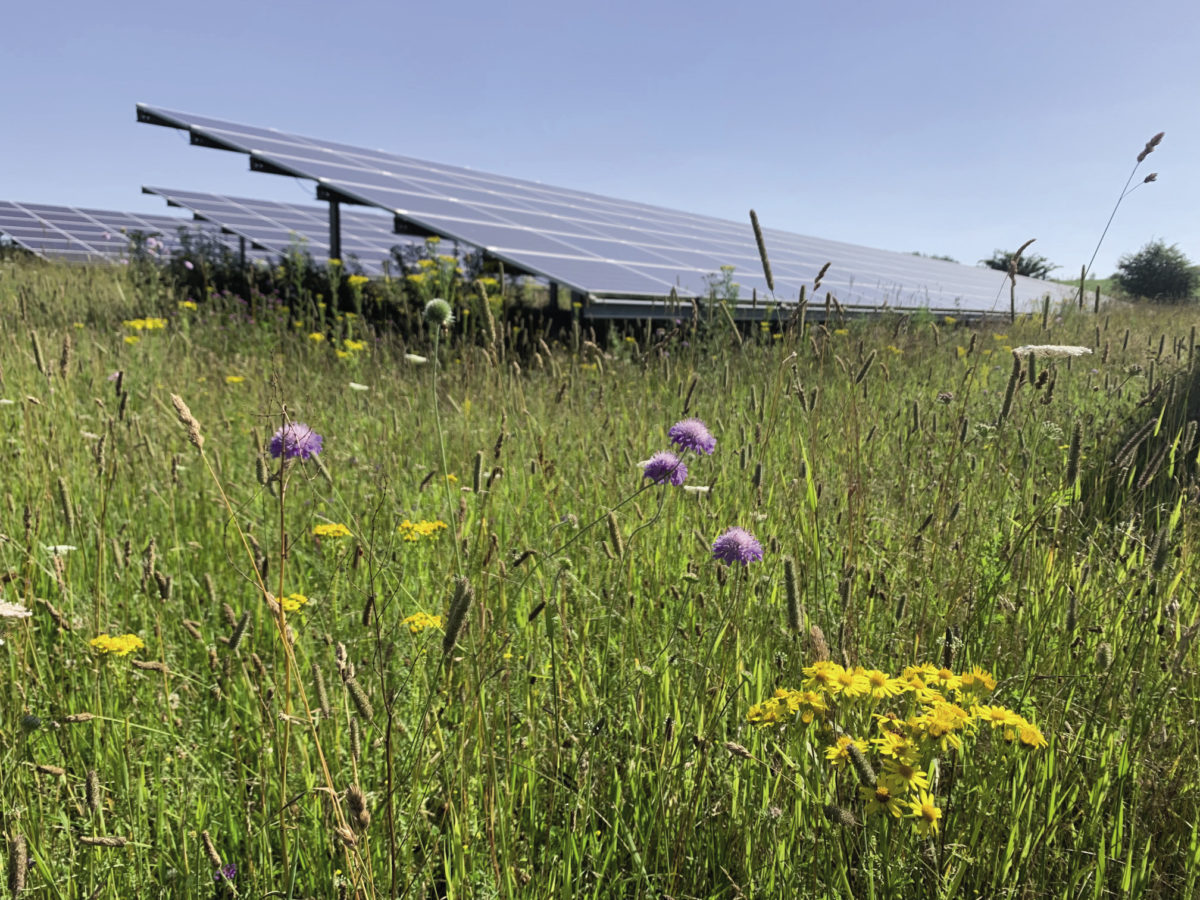The solar industry has historically focused on low-carbon energy production and playing a key role in preventing the climate crisis. But we are also facing a biodiversity crisis. Britain, for example has lost more of its biodiversity than almost anywhere else in western Europe and is among the most nature-depleted countries in the world. That is shocking.
The climate and biodiversity crises are strongly linked, and their solutions are interrelated. The recent emergence of two intersecting forces – sustainable finance (the carrot) and tougher biodiversity legislation (the stick) – mean this could be a turning point for nature, and in particular, the way the industry and the public view solar farms.
Carrot and stick
Investment in “sustainable funds” has intensified over the past two years, as these types of funds have been shown to perform well financially. Solar farms that have a positive biodiversity impact above and beyond the basic mitigations required by the environmental impact assessment score well on these funds’ environmental, social and governance (ESG) scores. Investors and lenders are asking more and more questions about the sustainability and environmental performance of solar assets, and this trend will continue. Improving biodiversity on solar farms will give developers extra kudos with potential investors. Developers that go the extra mile in terms of biodiversity will be rewarded with easier access to finance, in addition to easier access to permits from the local authorities.
In addition to the influential rise of sustainable finance, new legislation in the UK and EU is supercharging the focus on biodiversity. Governments seem to be finally waking up to the urgent need to do more to address the catastrophic biodiversity loss we are experiencing. This has been catalyzed by the Covid-19 pandemic and the growing realization that biodiversity isn’t just nice to have. It’s essential to our health, economy and human existence on this planet.
The UK and EU already have legislation in place that protects habitats and species, but this has proven not enough to stop the rapid decline in biodiversity. As a result, the UK Environment Act will bring into law the requirement for all new developments to deliver an increase of at least 10% in biodiversity from 2023. Similarly, one of the key actions of the EU Biodiversity strategy is to prioritize renewable energy solutions that can be favorable to biodiversity, such as solar farms.
Biodiversity hotspots
This is a huge opportunity for the solar industry to demonstrate innovative approaches that truly integrate habitat creation and nature with energy generation. Solar farms by their very nature, if you’ll excuse the pun, present the ideal circumstances to allow biodiversity to recover and produce clean energy that helps to regenerate nature.
When an area is turned over to solar energy generation, the land is no longer intensively managed, either by plowing or the application of chemicals. This in itself has a positive impact on soil health, which is vital for rebuilding healthy ecosystems and removing carbon from the atmosphere. But additional active steps which improve habitat and promote biodiversity encourage nature to come flooding back in, with positive knock-on effects for surrounding areas. The good news is that further intentional actions to increase biodiversity don’t have to be elaborate or expensive – it just requires some thought from the early stages of development.
It is best to work with an experienced ecologist to establish the baseline conditions and then identify classes of species. For example: Insects, bees, butterflies, birds and reptiles could be encouraged to thrive through specific habitat enhancements. The recently published British Standard for designing and implementing biodiversity net gain sets out a solid process and tools for developers and solar farm designers to follow when undertaking this exercise.
Clever biodiversity improvements don’t always have to involve additional areas of land. It can be as simple as using the awkward corners of a site to locate a pond or habitat pile. Raising fencing up a few centimeters so that small mammals can pass underneath has no extra cost. In fact, some biodiversity measures, such as cutting hedgerows and mowing less frequently, may even save money during the operational phase.
Revenue stacks
I can foresee a future where solar farms have evolved from just energy generation facilities into biodiversity hotspots that are leading the recovery of nature in our landscape. The biodiversity gains they produce will not only benefit nature and the climate, but may become sought after by development projects in other industries that are unable to deliver the required biodiversity net gain. Solar farms may be able to “trade” any additional biodiversity credits they have and reap further benefits.
In summary, the solar industry is uniquely positioned to help mitigate both the climate and biodiversity crises. We are at the dawn of a new “greener” era whereby regenerating nature will be of equal importance to generating energy. Solar farms five to 10 years from now will look and feel very different to the solar farms of today, and hopefully that will be because they support the levels of biodiversity: birds, bees, butterflies, insects and mammals, not seen or heard since our grandparents were young. This is the hope we all need in the face of crisis and makes it an exciting time to be part of the solar industry.
About the author
Ellie van der Heijden is a partner at Everoze group. She provides consulting services for renewables, storage and flexibility. Everoze delivers engineering services for solar PV through its subsidiary, Skyray.
This content is protected by copyright and may not be reused. If you want to cooperate with us and would like to reuse some of our content, please contact: editors@pv-magazine.com.
